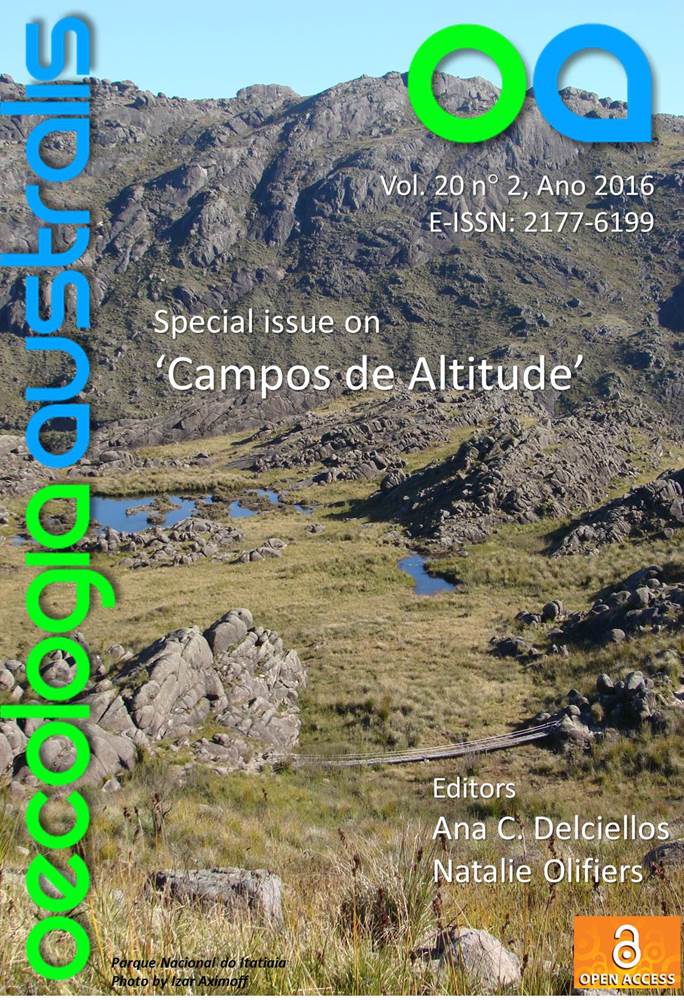SPECIES COMPOSITION, CONSERVATION STATUS, AND SOURCES OF THREAT OF ANURANS IN MOSAICS OF HIGHLAND GRASSLANDS OF SOUTHERN AND SOUTHEASTERN BRAZIL
DOI:
https://doi.org/10.4257/oeco.2016.2002.07Keywords:
Amphibians, Biodiversity, Brazilian Atlantic Forest, Open fields, Protected Area NetworkAbstract
Amphibians are the most threatened vertebrate group in the world, with about 32% of species under some category of threat. Conservation strategies depend on basic data, such as species distribution and natural history, which are largely lacking for endemic species inhabiting mosaics of highland grasslands and forest patches of Southern and Southeastern Brazil. Highland grassland fields occur in the Serra do Mar ecoregion and harbor an endemic anuran fauna associated to rocky outcrops and open fields interspersed among Araucaria, Rain and Cloud Forests. Here, we assembled occurrence records of anurans from mosaics of highland grasslands and forest patches in Brazil from the literature. We also compiled the conservation status of those species, including the spatial distribution of richness and endemism. We found that 75 species occur in this environment, of which about 46% are endemic. Highland grassland areas in and around Protected Areas in the Serra do Mar and Serra da Mantiqueira are under strong pressure, including criminal fire, forestry, and mining. Additionally, anurans from high altitude areas are apparently more prone to get infected by the chytrid fungus, whose growth is favored in cool and humid weather. Since anuran species inhabiting such seasonal environments have behavioral and life history adaptations, gathering data on how these disturbances affect anuran populations is urging in order to better inform conservation practices and landscape management plans.Downloads
Download data is not yet available.
Downloads
Additional Files
Published
2017-02-23
Issue
Section
Articles


